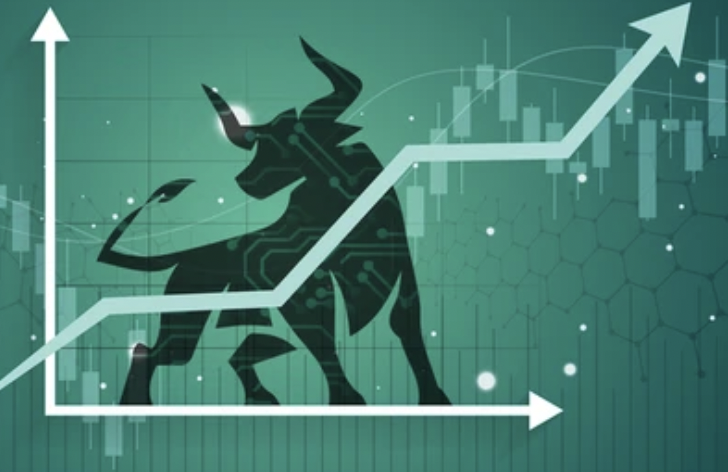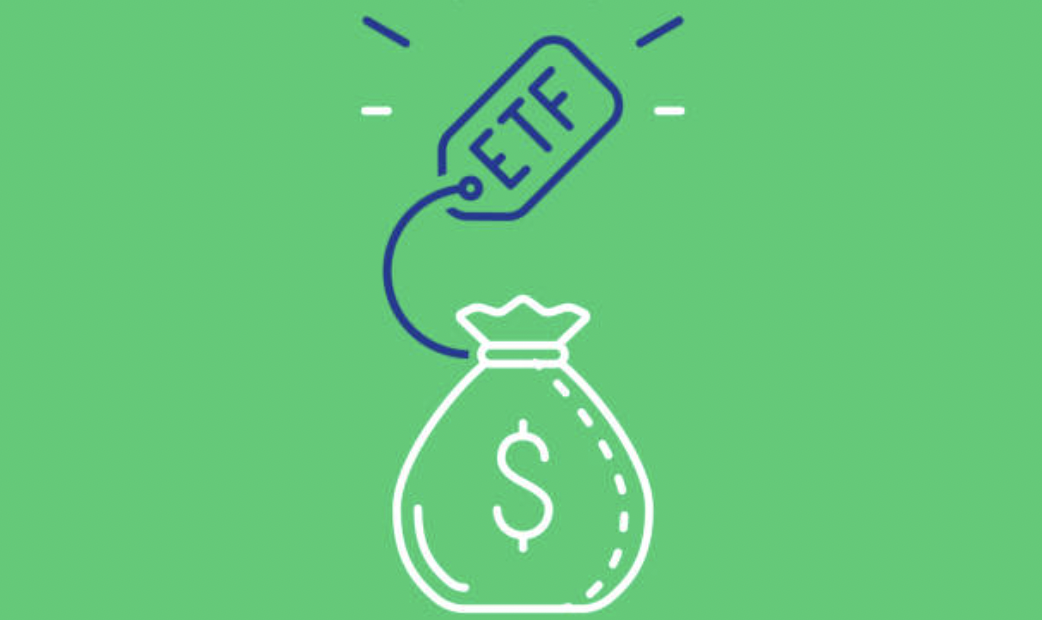
Skylar Williams
Jul 15, 2022 15:02
Dividends are bonus payments made to shareholders by a corporation. Investing in dividends entails purchasing stock in a firm that pays dividends. You will earn a portion of the company's profits if you hold these types of stocks. Dividends are an additional source of income.
Dividends are a method of rewarding investors, and certain dividend-paying firms remain among the greatest investments available on the stock market today. While dividend stocks often underperform more risky investments, they provide relatively consistent returns and may be used to diversify a portfolio. There are several types of dividends that a company may use to distribute a portion of its revenues. But how do dividends work?
Dividends, in Finance Management, are a percentage of a company's profits distributed to its shareholders. When a business generates a profit, the extra cash can be utilized in one of two ways. The corporation may reinvest its gains in the business (retained earnings) or distribute them to its shareholders. The distribution of funds to shareholders takes two forms: share repurchases and dividend dividends.
In most businesses, a portion of the profit is held as retained earnings, while the remainder is dispersed to shareholders.
Here are a few noticeable characteristics of dividends:
The dividends are normally distributed in accordance with the company's distribution policy.
The company's board of directors declares dividends each year. These board acts require shareholder approval in certain jurisdictions, such as the United Kingdom, and in other jurisdictions, such as the United States, such approval may not be necessary.
Typically, dividends are distributed as a predetermined sum per share. Specifically, $1 per share. Consequently, the stockholders will get dividends proportional to their shares.
In contrast to the payment of interest and principal on corporate debt, the distribution of dividends to common shareholders is discretionary and dependent on the business's success; the firm may choose not to pay dividends in a given year.
Dividends are not considered a cost but are instead distributed to shareholders from earnings after taxes. In certain countries, dividends may be subject to shareholder taxation, and the tax treatment of dividends may differ from the treatment of capital gains.
The dividends can be distributed in a variety of ways, including cash dividends, additional dividends, stock dividends, stock splits, and reverse stock splits.
The payment of dividends is crucial for financial analysts since it influences stock prices and the return on investments.
When a firm decides to pay a dividend, each share of stock an investor possesses entitles him to a certain dividend payment. Relying on the type of dividend distributed by the firm, the payment may be made in the form of cash, more shares, or warrants to buy stock.
No legislation mandates that corporations pay dividends, and the dividend is merely the method through which a corporation decides to distribute its profits to its shareholders. In contrast, REITs must distribute a minimum of 90 percent of their net earnings as dividends, and this is what qualifies them as REIT securities. Technically, REITs pay distributions, which, at least from the standpoint of the beneficiary, resemble dividends. Unlike dividends, which may or may not be paid in cash, distributions are always paid in cash.
There are four important dates related to dividends: the declaration date, the ex-dividend date, the record date, and the payment date. Let's examine these in depth.
The declaration date, often known as the announcement date, is straightforward, and it is the day on which a company's board of directors authorizes or declares dividend payments to shareholders.
Before choosing the date dividend payments will be sent to shareholders, companies must consider a variety of criteria, including retained earnings, which are a company's previous profits minus dividends paid in the past.
The ex-dividend date, or ex-date, is crucial for investors to comprehend since it defines who is entitled to receive dividends. You are eligible for the payout if you own the stock as of the ex-date. However, if you buy dividend-paying stock on or after the ex-date, you will not be entitled to the dividend. Furthermore, you will still get the dividend if you possess the stock on the ex-date but sell it before the payment date.
The record date is the last day you must be listed as a shareholder on a company's books in order to collect the dividend. This is the cutoff date for shareholders to be eligible to receive a forthcoming dividend payout.
Most stockholders presumably prefer this date: The payment date indicates the day corporations will pay qualified shareholders.
It is one of the most prevalent types of cash dividends. On the "day of declaration," shareholders proclaim the amount to be distributed among stockholders. The sum is then allocated to shareholders on the "day of record," and payments are paid on the "date of payment." Companies should have sufficient retained earnings and sufficient cash on hand to pay shareholders in cash.
Under this form, a corporation offers a transferable promissory note to its shareholders, confirming the dividend payment at a future date.
A scrip dividend may or may not accrue interest and has shorter maturity dates. When a corporation lacks sufficient liquidity and needs time to turn its present assets into cash, it will issue these dividends.
Bond Dividends are comparable to scrip dividends, with the exception that they have a longer maturity time and accrue interest.
These types of dividends are provided when a corporation lacks operational cash but nevertheless wants to keep its shareholders satisfied by issuing common stock.
The shareholders receive the bonus shares in proportion to the number of shares they currently own and at no further cost. The issuance of bonus shares has a positive psychological effect on investors, notwithstanding the growth in the number of outstanding shares of the company.
These dividends are distributed in the form of a tangible asset rather than cash. In the event that a corporation lacks operational capital, non-monetary dividends are distributed to investors. The property dividends might take shape, including merchandise, assets, vehicles, and real estate. As the fair market value of the property issued as a dividend may differ from its book value, firms report the difference as a gain or loss.
A liquidation dividend occurs when the board of directors agrees to return the original money invested by equity stockholders as dividends. These are often paid at the conclusion of a company's activities or at the moment of its ultimate closure.
Stocks that generate dividends can provide a constant and rising source of income. Typically, investors like to invest in firms that give dividends that rise annually since this helps to outperform inflation.
Established firms that no longer need to pour as much money into their business are more likely to pay dividends. Companies with rapid development, such as those in the technology or biotechnology industries, seldom pay dividends since they must reinvest revenues in growing their growth.
The most dependable American corporations have a history of increasing dividends without reductions for decades. Common stock dividends are not guaranteed. However, if a corporation starts or increases a dividend, investors anticipate that it will be sustained, especially during difficult circumstances. Given that dividends are viewed as an indicator of a company's financial health, investors frequently discount a stock if they believe the dividend will be lowered, resulting in a decrease in the share price.
Companies such as Exxon, Target, Apple, CVS, American Electric Power, and Principal Financial Group pay dividends.
One note: Investors who do not wish to investigate and select specific dividend stocks to invest in may find dividend mutual funds and dividend exchange-traded funds appealing (ETFs). These funds have a diverse portfolio of dividend-paying stocks and provide dividends to investors.
Once a business reaches maturity, it may become lucrative and earn more business than it spends on maintenance. As the company's cash reserves increase, it has many options:
Reinvesting the funds in expanding the business.
Buying back shares to lower the number of existing shares.
Paying dividends.
Recently, share repurchases have gained popularity as a technique to indirectly reward shareholders without returning cash to them. If a corporation does not need the funds to perform a merger or expand its business, it may choose to distribute a dividend to investors. Dividends may be an enticing incentive for investors, particularly those who rely on their investment portfolio to generate a steady income.
The majority of corporations that pay a quarterly dividend also pay monthly, biannually, or yearly. After the board of directors determines the dividend payment amount, the corporation declares — announces — its next dividend. This day is known as the date of declaration.
On the declaration date, the corporation also specifies the record date, which is the date by which you must be a shareholder in order to receive the dividend payment. The record date establishes the ex-dividend date, the first day owners who purchase the stock are ineligible to collect the dividend. The ex-dividend date precedes the record date by one business day.
The payment date is the date the dividend payment is actually dispersed to shareholders. On the payment day, dividend cheques are issued to shareholders receiving dividends through the mail.
When deciding which dividend stocks to buy, numerous considerations must be made.
It is advised that investors seek organizations with long-term profitability and a 5-to-15 percent earnings growth projection. Companies with a high debt-to-equity ratio may be more likely to be forced to reduce dividends.
Investors must also assess larger industry trends to guarantee that their selected firm is likely to succeed in the present environment.
The dividend yield, presented as a percentage of a stock's current price, demonstrates how much a company pays in annual dividends relative to the stock's price. The ratio provides an indication of a stock's potential future income to an investor. For example, if a stock is trading at $10 per share and its yearly dividend is $0.50 per share, the dividend yield is 5%.
Beyond yield, dividend growth is a significant factor. For instance, a greater yield than other stocks in the same peer group may indicate a lower stock price and not always a safe investment. A firm that pays a stable dividend but whose financial performance is accelerating is a more attractive investment opportunity that may boost its dividend. Ultimately, dividend growth is a better sign of a company's quality.
Earnings per share (EPS) is a typical statistic used by shareholders to evaluate a company's profitability. Technically, it is a financial ratio that divides the net earnings accessible to shareholders for a specific time period by the number of outstanding shares. A single EPS value for a specific firm might be arbitrary, but the metric is useful when comparing many businesses.
Dividends per share represent the proportion of a company's earnings given to its shareholders. Similar to earnings per share, it is a measure of a company's profitability and can assist an investor in determining if a stock is a worthwhile investment. In actuality, firms raise their dividend per share to indicate great success.
That depends on the perspective of the individual investor. If he is interested in capital gains, he prefers to earn tax-free stock dividends until he sells the shares. If he desires a consistent income stream, he will choose the quick financial liquidity of a cash dividend. Cash dividends offer greater flexibility to the investor. If he so chooses, he may buy further shares of the corporation. Alternatively, he may use the money to pay his monthly expenses. In any event, cash dividends are considered taxable income the year the investor receives them.
Because the frequency of stock dividends has decreased over the past 15 to 20 years, one need not be overly concerned about them. This is an educated guess, as exact data throughout the stock market are impossible to get.
TOP1 Insights contains a variety of facts and useful articles. This article barely scratches the surface, and myths and Facts About Dividend Investing explain in further detail why stock dividends are not dividends. Or learn more about dividend reinvestment schemes (which leverage the notion of fractional shares).
Dividends are taxed differently depending on whether they are qualified or ordinary. Dividends from the U.S. or international corporations listed on a major U.S. stock market are eligible. Qualified dividends may also be paid by companies located in nations with which the United States has a tax treaty or are deemed U.S. possessions. Qualified dividends receive favorable tax treatment that may be less than the standard tax rate. The applicable tax bracket determines the tax rate on qualifying dividends.
For example, eligible dividends are tax-free if you are in the 10 percent or 15 percent tax rate. If you fall below the 37 percent tax band, your tax rate is 15%. And if you would normally be taxed at a rate of 37%, you pay 20% instead.
On the other hand, Ordinary dividends are from corporations that do not fit the conditions mentioned above. REITs, employee stock options, and tax-exempt corporations may pay ordinary dividends. In contrast to qualifying dividends, they are taxed at the investor's normal income tax rate.
For investors seeking an alternative method of profiting from stocks, dividends represent an enticing opportunity. To effectively invest in dividend-paying stocks, it is necessary to understand what dividends are and the sort of dividends a firm pays.
Additionally, an investor must be informed of all dates pertinent to dividend distribution. For instance, if you acquire shares after the ex-dividend date, you will not be entitled to the next dividend.
Additionally, it is vital to examine the dividend safety of a corporation using the appropriate ratios. A high dividend yield may appear alluring, but its rationale is sometimes questionable. Several examples of companies with astronomically high dividend yields were forced to slash dividends considerably.

Jul 14, 2022 16:00

Jul 15, 2022 16:03